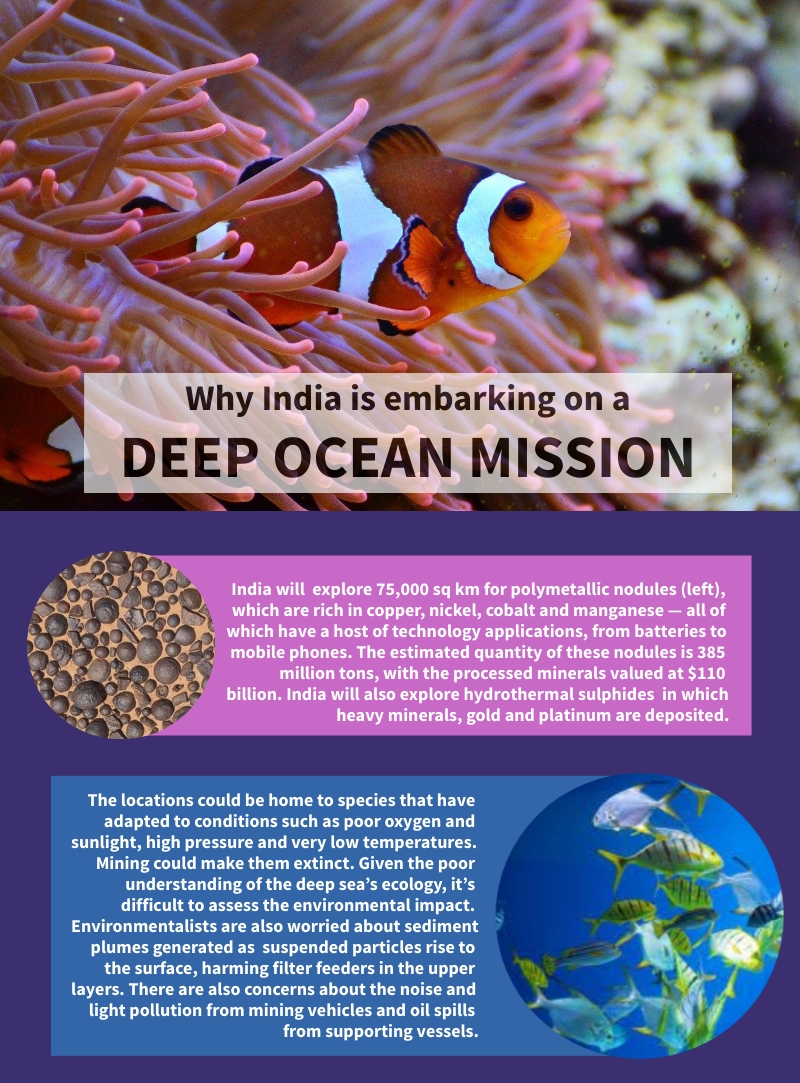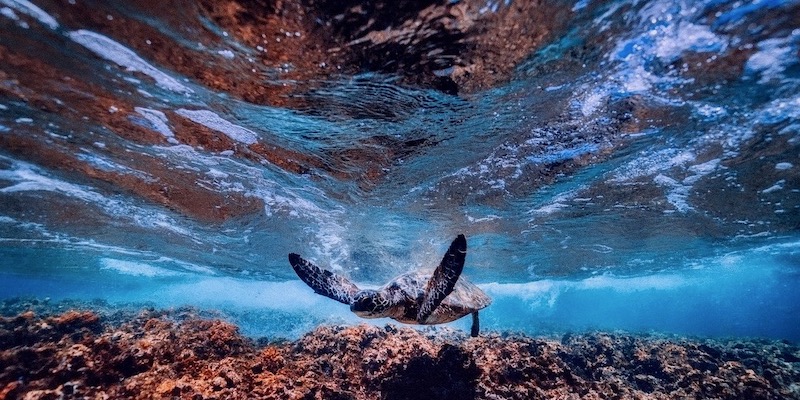Ashraf Engineer
February 20, 2021

PODCAST TRANSCRIPT
Hello and welcome to All Indians Matter. I am Ashraf Engineer.
Within three years, an air force pilot and two scientists will descend 6,000 metres into the Indian Ocean in a battery-powered vehicle – a cramped titanium alloy submersible with three viewing ports, a diameter of 2.1 metres and walls with a thickness of 80 millimetres. Slightly smaller than a Maruti 800, this is the Matsya 6000. Its success is central to India’s Deep Ocean mission for which Union Budget 2021 set aside Rs 4,000 crore. How will it affect India’s economic ambitions and what are its downsides? Stay tuned to find out.
SIGNATURE TUNE
The Matsya 6000 is capable of staying underwater for up to 16 hours and will be India’s first manned submersible. If successful, it will account for a paradigm shift in India’s science and technology prowess. Our oceans are largely unexplored and there is now a race among countries to become not just exploration pioneers but to lay claim to their riches.
Only the US, China, Russia, Japan and France have missions to explore the deep ocean. If the launch goes through, it will place India in this elite group.
India has a vast coastline and its exclusive economic zone is equivalent to 67% of its land mass, according to the National Institute of Ocean Technology. Don’t forget either that this vast oceanic area handles much of India’s trade.
Humanity’s knowledge of the oceans is confined to about 5% of their waters, and most of it is about the shallows. Through such explorations, scientists will almost certainly discover thousands of marine species and achieve a deeper understanding of how humans are affecting the environment and how those changes in turn affect us.
Take, for example, dumping of plastic in the ocean. There have been several instances of marine life washing up dead on shores along with thousands of tons of plastic waste. However, we don’t have an exact understanding of how much waste has degraded the oceans. Governments everywhere are trying to contain the littering. Such research can put into perspective its harmful effects and catalyse a change in our habits.
While Finance Minister Nirmala Sitharaman stressed on the environmental aspect of the mission, the key reasons are economic – what is called the ‘blue economy’.
The World Bank defines the blue economy as the sustainable use of resources from the ocean for economic growth, ocean health as well as improved livelihoods. An understanding of these resources enables governments to manage their use for economic growth while preserving them for future generations.
Countries with such missions are looking to exploit deep-sea minerals and they are understandably reluctant to share such technology.
China, for example, has released footage of its manned submersible, Striver, which descended over 10,000 metres into the Mariana Trench with three researchers. But it naturally won’t share this technology.
India, its great regional rival, has started work on its submersible at the National Institute of Ocean Technology, Chennai, with the Indian Space Research Organisation working on the crew module. There might be a test run as early as next year with a dive of up to 500 metres.
India has a 15-year contract with the UN-backed International Seabed Authority, or ISA, which is in charge of regulations for ocean floors, to explore 75,000 square kilometres of the Indian Ocean for polymetallic nodules. These potato-shaped nodules lying on the seabed are rich in copper, nickel, cobalt and manganese — all of which have a host of technology applications, from batteries to mobile phones.
The estimated quantity of these nodules is 385 million tons, with the processed minerals valued at $110 billion.
The nodules are thought to contain 4.7 million tons of nickel, 4.29 million tons of copper, 0.55 million tons of cobalt and 92.59 million tons of manganese.
India also has a 15-year contract for the exploration of hydrothermal sulphides across 10,000 square kilometres southeast of Madagascar. Hydrothermal sulphides are like underwater volcanoes in which heavy minerals are deposited. These include rare earth elements like gold and platinum.
There is also the possibility of ocean tourism. In a published paper, the National Institute of Ocean Technology said it envisaged manned underwater vehicles to make the oceans habitable and enable tourism.
Let’s consider the broad components of India’s Deep Ocean Mission.
First, the technology for underwater vehicles and robotics to assist deep-sea mining. Second, advisories that determine how ocean-atmosphere coupling influences our climate. Third, research on deep-sea biodiversity. There’s also deep ocean survey and exploration, energy and freshwater, and an advanced marine biology station at Goa.
Let’s talk a little about the technology now.
To ensconce three humans in a tiny titanium sphere maintaining a liveable air pressure of 1 atmosphere amidst 600 atmosphere waters is no easy task.
The groundwork for the expedition termed ‘Samudrayan’ began many years ago. The National Institute of Ocean Technology, in just three years of its establishment in 1993, built a remotely operable deep-water crawler to test mine the seafloor at a depth of 410 metres. Over time, it added a collector, a crusher and a flexible riser to pump polymetallic nodules to the surface, tested at a depth of 3,400 metres in the Bay of Bengal in 2019.
However, it must be remembered that while there are about 30 private and government contracts with the ISA for deep-sea exploration deep-sea mining has not actually happened yet. The plan to allow it, however, has already attracted criticism because of the fear that it will irreparably damage the flora and fauna on the ocean floor.
According to the International Union for Conservation of Nature, the locations being examined could be home to unique species that have adapted to conditions such as poor oxygen and sunlight, high pressure and extremely low temperatures. Mining expeditions could make them go extinct even before they are discovered. Given the poor understanding of the deep sea’s ecology, it’s difficult to assess the environmental impact.
Environmentalists are also worried about the sediment plumes generated as the suspended particles rise to the surface, harming filter feeders in the upper oceanic layers. There are also great concern about the noise and light pollution from mining vehicles and oil spills from supporting vessels.
Scientists have, in fact, raised concerns about deep-sea mining for decades. Their fears seemed to be confirmed by a report commissioned by the Deep Sea Mining Campaign and Mining Watch Canada that warned of the dangers posed to Pacific Island economies, livelihoods and cultures. It went on to urge a moratorium on deep-sea mining.
The report said that the damage from “mining deep sea polymetallic nodules would be extensive, severe and last for generations, causing essentially irreversible species loss and ecosystem degradation”.
The metal toxicity caused by waste disposal puts rare and endangered species like whale sharks, sperm whales and leatherback turtles at risk. It could affect even commercial fishing.
The report was unequivocal in saying that the costs of deep-sea nodule mining would most likely outweigh the benefits. The impacts on coastal communities’ health and livelihoods are uncertain too and would require rigorous studies, the report added.
In India, the Deep Ocean Mission is at an early stage and most people haven’t woken up to such potential dangers. While the need to study the oceans, their impact on the climate and their diverse lifeforms cannot be denied, how mining will impact it perhaps needs greater thought before we rush headlong into it.
Thank you all for listening. Please visit allindiansmatter.in for more columns and audio podcasts. You can follow me on Twitter at @AshrafEngineer and @AllIndiansCount. Search for the All Indians Matter page on Facebook. On Instagram, the handle is @AllIndiansMatter. Mail me at editor@www.allindiansmatter.in. Catch you again soon.






